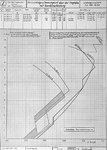I agree
It was a FW 190 A5-U3 what was definitive a fighter bomber and the prequel to the FW 190 F-2 serie.
So in reality it would be a FW 190 A-6 clean fighter with 4x 151/20, 2 x 131 or 2 x 151/20, 2 x 131.
To my opinion the FW 190A had an advantage against the Hellcat because it could outclimb, outdive, outrun and outroll the Hellcat and we all know that the FW 190A wasn't a turn fighter in all it's career and the pilots don't fly her as turnfighter.
Sounds like the same situation the Mark V Spitfire was in when it first faced the 190, although I'm not sure if the 190 could outdive a Hellcat or if it could outroll it significantly, but the 190 would surely outrun and outclimb it.


